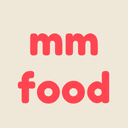East Asia Delicious but Dangerous: Navigating Persimmon Allergies Safely
Persimmon allergy traveling in East Asia? Hidden persimmon ingredients in dishes are a major risk. Learn how the mm food app translates menus & uses AI to instantly flag unsafe foods for your allergy.
MM Food Team

Dine Confidently Anywhere
Get the MM Food app for instant menu translation and allergy detection.
East Asia Delicious but Dangerous: Navigating Persimmon Allergies Safely
East Asia beckons travelers with its incredible culinary landscape, a harmony of unique flavors and textures. Yet, for individuals with a persimmon allergy, this adventure carries hidden risks. Persimmons ('hachiya', 'fuyu', 'gam', 'hongshi', 'kaki') are deeply woven into the region's food culture, appearing far beyond the whole fruit. Spotting them on menus can be a significant challenge for non-native speakers, turning seeking sustenance into navigating a potential minefield.
Why Persimmons Pose a Problem in East Asia
Persimmons aren't just eaten fresh. They are incorporated into:
- Traditional Desserts: Hoshigaki (Japanese dried persimmon), Gotgamssam (Korean walnut-stuffed dried persimmon), candied slices, and seasonal fruit plates.
- Savory Dishes: Added to salads for sweetness and texture, featured in relishes, or incorporated into sauces and marinades.
- Street Food & Snacks: Found in mochi, certain pastries, candies, and juices.
- Teas & Vinegars: Persimmon leaf tea (Gamnip-cha in Korea) and persimmon vinegar.
The challenge lies in the language barrier and subtle inclusions. Knowing the word 'persimmon' isn't always enough; identifying local names and recognizing descriptions where persimmon might be a subtle component is critical. Simply asking "does this have persimmon?" in English isn't foolproof.
Enter Your Travel Safety Net: The mm food App
Don't let fear of your persimmon allergy limit your culinary exploration in East Asia. The mm food app is designed specifically to empower diners with dietary restrictions:
- Define Your Allergy: Easily add "Persimmon" (or its known local names) to your dietary restrictions list within the app.
- Instant Menu Translation: Point your phone's camera at any menu – street stall or fine dining. mm food instantly translates it into your native language.
- AI-Powered Safety Scan: This is the game-changer. Our AI doesn't just translate words, it analyses the meaning of dish descriptions in the context of your restrictions. It scans for persimmon ingredients, synonyms (kaki, gam, hongshi), related products (persimmon vinegar, dried persimmon), and common dishes where it hides.
- Clear Safety Indicators: Instantly see which dishes get a green "Likely Safe" light based on your restrictions, which require extra caution (yellow), and which are flagged as "Likely Unsafe" (red) due to detected persimmon content.
Traveling Smart & Safe
While mm food provides a powerful technological shield, combine it with these practices:
- Carry a Translation Card: Have a card written in the local languages (Korean, Japanese, Mandarin, etc.) stating your persimmon allergy clearly, listing common forms and local names.
- Learn Key Phrases: Know how to say "I am severely allergic to Persimmon" in the local tongue.
- Communicate Clearly: Show your card and use mm food's flagged dishes as a starting point for discussion with restaurant staff.
- Beware Cross-Contamination: Understand that shared prep areas or utensils (e.g., cutting boards used for fruit salads) can pose risks.
Enjoy East Asia with Confidence
A persimmon allergy shouldn't deter you from experiencing the incredible food cultures of Japan, Korea, China, Taiwan, and beyond. With mm food as your intelligent dining companion, translating menus instantly and proactively identifying hidden persimmon risks, you can significantly reduce stress and focus on the joy of discovery. Prepare your profile on mm food before your trip and dine out in East Asia with newfound confidence and safety.
Tags

Dine Confidently Anywhere
Get the MM Food app for instant menu translation and allergy detection.